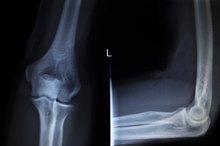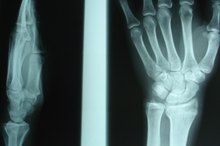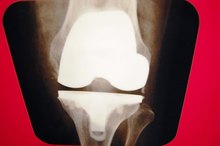Complications After an Ankle Sprain
Ankle sprains are among the most common joint injuries seen by orthopaedists. Ankle sprains are injuries to one or more ligaments surrounding the ankle joints. Ligament injury can range from mild (merely stretched), to moderate (partially torn), to severe (completely severed). Ankle sprains usually fully resolve, but when inappropriate treatment, or significant injury, or premature return to activity has occurred, complications can arise such as prolonged pain, persistent swelling, stiffness, instability, and nerve dysfunction 2.
If you are experiencing serious medical symptoms, seek emergency treatment immediately.
Prolonged Pain
Prolonged or chronic pain is the most common complication of an ankle sprain 2. Even severe sprains should be healed and pain-free after 8 weeks, so if pain persists (with inflammation) there is likelihood of an undiagnosed fracture, cartilage tear, or ruptured tendon. Prolonged pain without inflammation occurs primarily with nerve injury. Chronic pain frequently disrupts normal walking, which then can affect joints of the hips, lower back and knees.
- Prolonged or chronic pain is the most common complication of an ankle sprain 2 there is likelihood of an undiagnosed fracture, cartilage tear, or ruptured tendon.
- Chronic pain frequently disrupts normal walking, which then can affect joints of the hips, lower back and knees.
Persistent Swelling
What Are the Causes of Sacroiliac Subluxation?
Learn More
Persistent swelling of the ankle is caused by several conditions, most commonly from unhealed torn ligaments, or by bone contusion leading to compression between the ankle joints, or by damaged and impinged blood vessels. Chronic swelling is sometimes caused by synovitis, which is inflammation of the inner lining of the ankle joint capsules. Persistent swelling of the ankle joints is usually accompanied by low-grade pain, but sometimes can occur without pain.
Stiffness
Stiffness is another complication of ankle sprains and usually a consequence of excessive swelling or inflammation. Ankle stiffness is usually accompanied by achy pain and leads to reduced range of motion, especially dorsiflexion. Over many months, reduced range of motion and joint dysfunction can lead to osteoarthritis, which is evidenced by bone spurs and reduced joint space on x-ray.
Instability
Torn Tendons & Ligaments From Hyperextension
Learn More
Ankle instability occurs when a sprained ligament (usually the outside lateral ones) heals in a stretched position (gross laxity) as opposed to its normal anatomic position, causing the ankle to become hyper-mobile and move in abnormal ways. Instability creates a sense of the ankle about to “give away” and may be accompanied by persistent low-grade swelling and pain. Ankle instability usually involves consistent weakening of the joints and greatly increases the likelihood of future ankle sprains.
Nerve Dysfunction
Nerve injuries may occur with either a significant twisting of an ankle sprain, and/or chronic swelling of the ankle leading to pressure on the cutaneous nerves surrounding the ankle. Symptoms include:
- burning pain
- shooting pain
- numbness,
- muscle weakness
- all of which are usually exacerbated by walking
Muscle weakness often causes re-injury due to reduced coordination. Abnormal proprioception may also result, which affects balance and stability of the foot and ankle.
Related Articles
References
- American Academy of Orthopaedic Surgeons
- Mayo Clinic: Sprain Ankle Complications
- "Sports Injury Prevention and Rehabilitation"; Eric Shamus et al; 2001
- American Academy of Orthopaedic Surgeons. OrthoInfo. Achilles Tendinitis. Reviewed June 2010.
- American Academy of Orthopaedic Surgeons. OrthoInfo. Arthritis of the Foot and Ankle. Reviewed March 2015.
- American Academy of Orthopaedic Surgeons. OrthoInfo. Ankle Fractures (Broken Ankle). Reviewed March 2013.
- Arthritis Foundation. Arthritis and Diseases that Affect the Ankle.
- Robati S, Porter K, Shahid M, Crompton T, Sandiford N. Ankle osteomyelitis: an unusual presentation. JRSM Short Rep. 2013;4(6):35. doi:10.1177/2042533313476682.
- Merck Manual Consumer Version. Tarsal Tunnel Syndrome. Revised March 2018.
- U.S. National Library of Medicine. MedlinePlus. Common peroneal nerve dysfunction. Reviewed August 7, 2017.
- Mascard E, Gaspar N, Brugières L, Glorion C, Pannier S, Gomez-brouchet A. Malignant tumours of the foot and ankle. EFORT Open Rev. 2017;2(5):261-271. doi:10.1302/2058-5241.2.160078
- Tiemstra JD. Update on acute ankle sprains. Am Fam Physician. 2012;85(12):1170-6.
- American Academy of Orthopaedic Surgeons. OrthoInfo. Sprained Ankle. Reviewed February 2016.
- Arthritis Foundation. Lab Tests for Diagnosing Ankle Problems.
- Merck Manual. Professional Version. Cellulitis. Reviewed September 2019.
- American Academy of Orthopaedic Surgeons. OrthoInfo. Compartment Syndrome. Reviewed October 2009.
- American Academy of Orthopedic Surgeons. (n.d.). Arthritis of the Foot and Ankle.
- American Academy of Orthopedic Surgeons. (n.d.). Sprained Ankle.
- Koehler SM, Eiff P. (2018). Overview of Ankle Fractures in Adults. Asplund CA, ed. UpToDate. Waltham, MA: UpToDate Inc.
- Mascard E, Gaspar N, Brugieres L, Glorion C, Pannier S, Gomez-Brouchet A. Malignant tumours of the foot and ankle. EFORT Open Rev. 2017 May;2(5):261-71.
- Robati S, Porter K, Shabid M, Crompton T, Sandiford N. Ankle osteomyelitis: An unusual presentation. JRSM Short Rep. 2013 Jun;4(6):35.
Writer Bio
Aironius French has been writing professionally since 1999, when he became a clinical chiropractic physician. His health-related articles have appeared in the newspapers "Calgary Sun," "Calgary Herald," "Ajo Corridor Times" and "Rocky Point Times" and in "Penasco" magazine. French holds a Bachelor of Science in physical anthropology and human development from the University of Calgary and a doctorate from the Canadian Memorial Chiropractic College.








